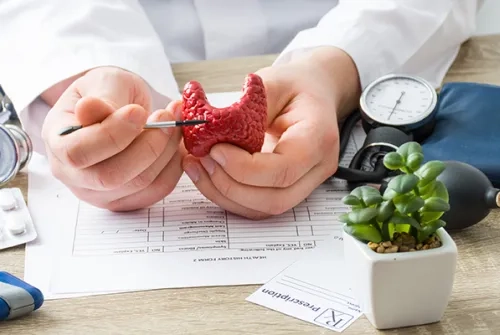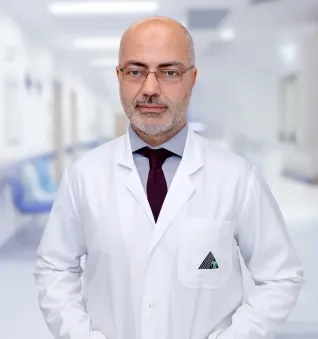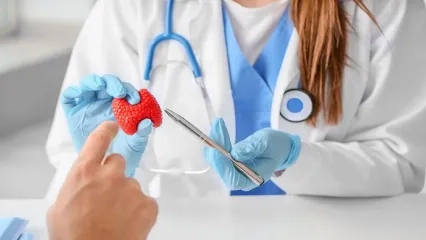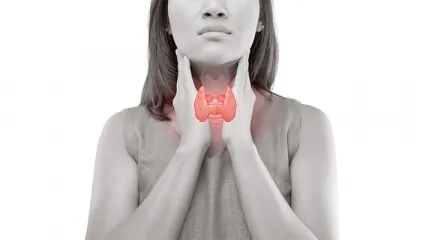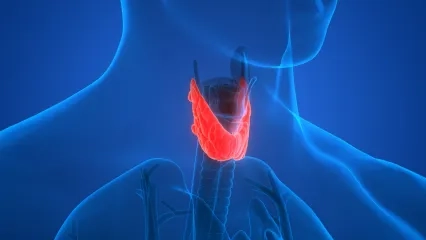Alo Yeditepe
Alo Yeditepe
Diagnosis in Thyroid Diseases
There is a scientific algorithm for the diagnosis of every disease. In the diagnosis of thyroid disease, the anatomical structure and functionality of the organ should be evaluated together. In the anatomical evaluation, ultrasound, and scintigraphy, if necessary, are examined; in the functional evaluation, T3, T4, and TSH hormones, which are blood tests, are examined. In addition, in some patients, thyroglobulin, anti-thyroglobulin, and TSR antibody may also be examined.
What is Thyroid Ultrasound, How is It Applied?
One of the most important tests in the diagnosis of thyroid diseases is thyroid ultrasound. Ultrasonography can answer many important questions such as the presence of nodules in the thyroid, inflammation, or the diagnosis of special diseases such as Hashimoto's, Graves', the detection of enlarged lymph nodes in the neck, and whether they grow due to inflammation or cancer spread. It is very widely and safely used because there is no harmful beam on the ultrasound and no substance needs to be injected into the body.
What is Thyroid Scintigraphy, and How is It Applied?
It is an imaging method such as ultrasound. Before the procedure, a low dose of a radioactive substance needs to be injected into the body. It is not a technique that should be applied to every patient, such as ultrasound, in some cases it may be necessary to understand whether the nodules in the thyroid gland work fast or slow.
Blood Hormone Tests (T3, T4, TSH, Thyroglobulin, TPO, TRAB)
The TSH hormone secreted from the pituitary gland in the brain comes to the thyroid gland and provides the secretion of two hormones called T3 and T4 from the thyroid gland. These hormones play an important role in almost every function in the body. A body function (digestion, circulation, movement, even brain functions) in which T3 and T4 are not involved is almost non-existent. The levels of T3, T4, and TSH hormones in the blood, which manage so many different jobs, are extremely important as they indicate the functional capacity of the thyroid gland.
What is Needle Biopsy?
The word biopsy is used in medicine to take a piece of suspicious tissue. Needle biopsy, on the other hand, is that this process is performed with only a thin needle on the tissue without cutting the skin. The goal here is to understand whether the cells in the suspicious nodule are benign or malignant (cancer). Thyroid biopsies are performed under local anesthesia with a thin needle without putting the patient to sleep (without anesthesia). The collected part is sent to the pathology department for examination under a microscope. The final report will be available in a few days.
This content was prepared by Yeditepe University Hospitals Medical Editorial Board.
”
See Also
- What is a Parathyroid Adenoma? Symptoms and Treatment
- What is Calcitonin Hormone? Calcitonin Hormone Deficiency
- If the Size of the Thyroid Nodule is Over 4 cm, Be Cautious!
- How Does High Calcium in Blood Cause Complaints?
- A First in the Literature: Parathyroid Cell Obtained from Thyroid Stem Cell
- Assessment of Hyperthyroidism
- Hashimoto's Thyroid Disease
- Thyroid Tumor (Cancer)
- Graves' Disease
- Thyroid Nodules
- Thyroid Surgery
- Assessment of Hypothyroidism
- What is the Harm of High Calcium in the Blood?
- Frequently Asked Questions in Thyroid Diseases
- Atomic Therapy (Radioactive Iodine Therapy)
- Which Thyroid Nodule Can Be Treated Without Surgery?
- She Was Relieved of Her Pain When the Missing Parathyroid Gland Was Found in The Chest Cavity
- Thyroid Storm Can Turn Life Upside Down
- Recovered From Thyroid Nodule with Needle Melting Method
- Stress Triggers Thyroid Diseases; These Occupations Are At Risk!
- Turkish Physician Developed a Novel Method for Parathyroid Transplant
- What Should Be Considered After Parathyroid Surgery?
- Parathyroid Diseases and Treatment
- They Said It Was Thyroid Cancer, But It Turned Out to Be Parathyroid Adenoma!
- The Frequency of Thyroid Nodules and Thyroid Cancer in Young People is Increasing!
- Thyroid Cancer Treatment Is Possible Without Removing The Entire Thyroid Gland
- Thyroid Storm
- T4 Hormone in 13 Headings
- Questions About Thyroid Diseases
- Thyroid Diseases
- Goiter (Thyroid Gland) Biopsy
- Radiofrequency Therapy in Thyroid Nodules
- What Is Autoimmune Hypoparathyroidism or Hypocalcemia?
- What Is The Loss of Low Calcium Level in Blood?
- What Is The Symptoms of Calcium Level Elevation (Hypercalcemia)?
- How It Is Made The Parathyroid Adenoma Operation?
- What Is Parathyroid Hyperplasia?
- Parathyroid Tumors
- What Are The Parathyroid Glands?
- The Incidence of Thyroid Cancer Has Increased! There is Turkey in the Research!
- Key Surgery Performed In Turkish Hospital For First Time
Alo Yeditepe

